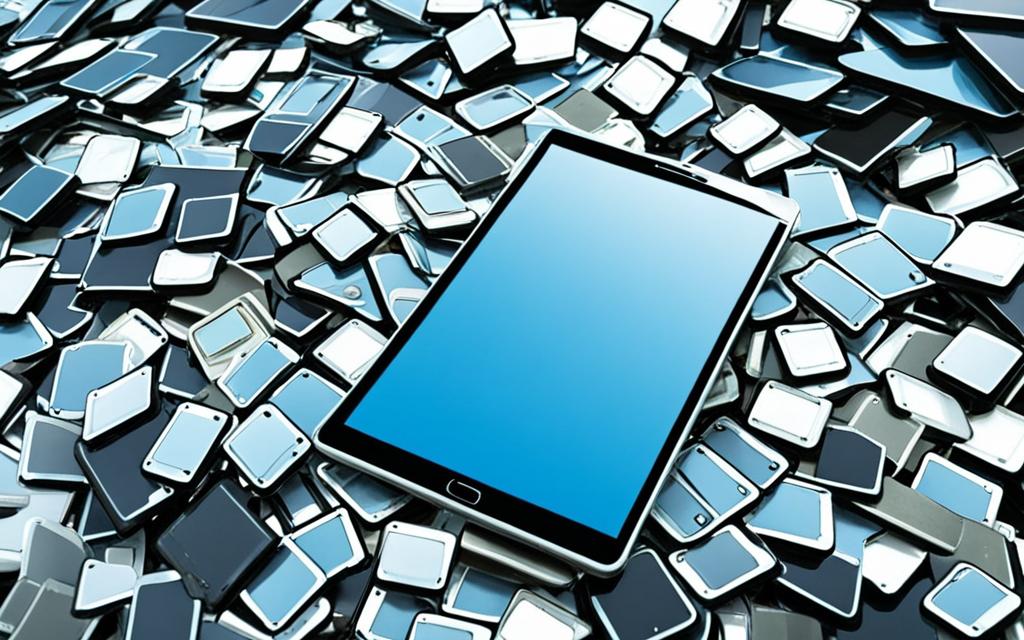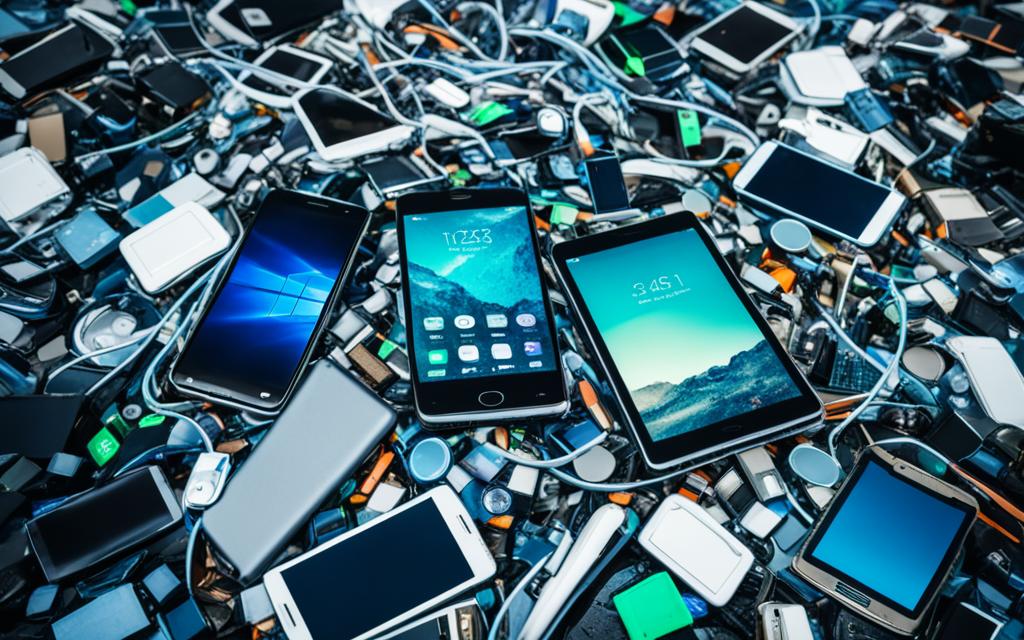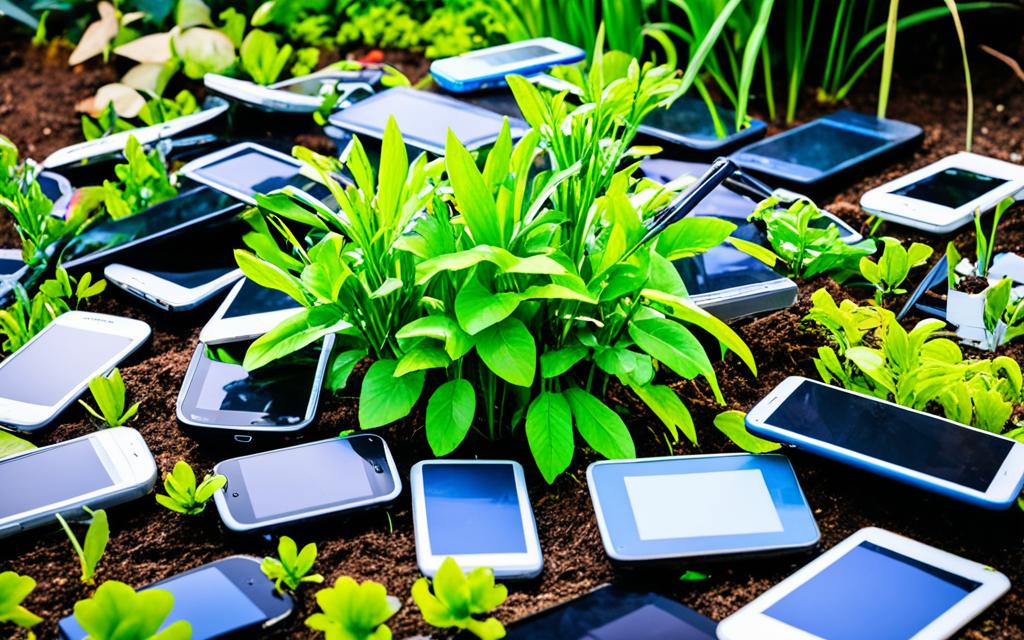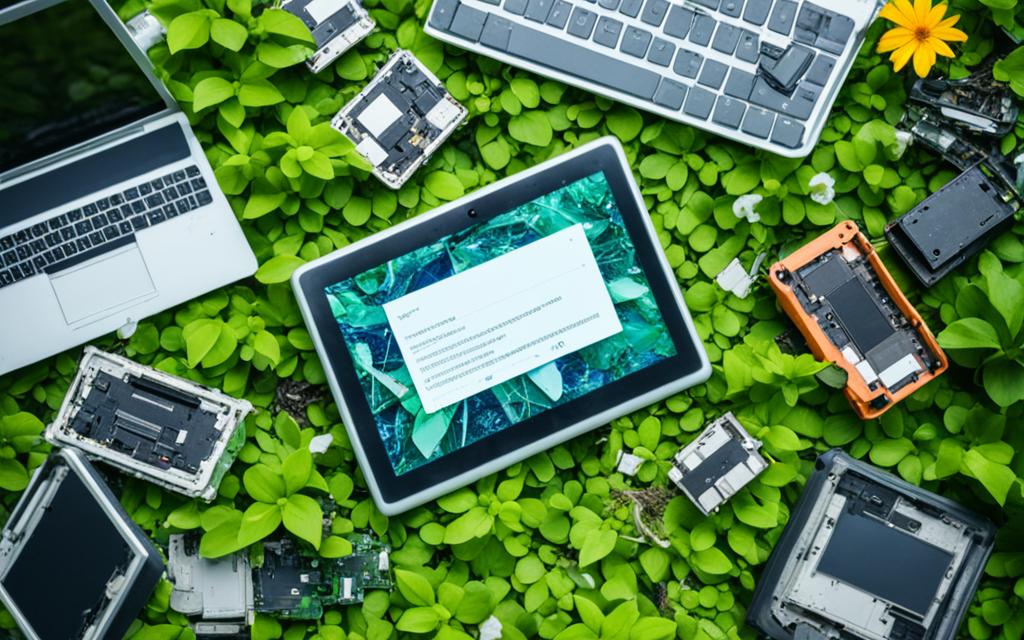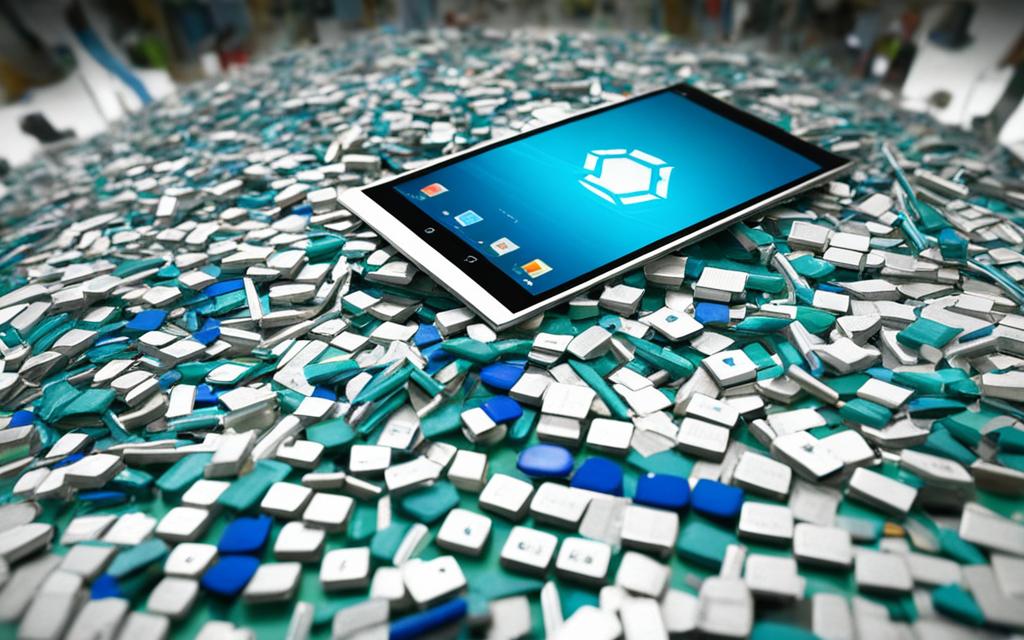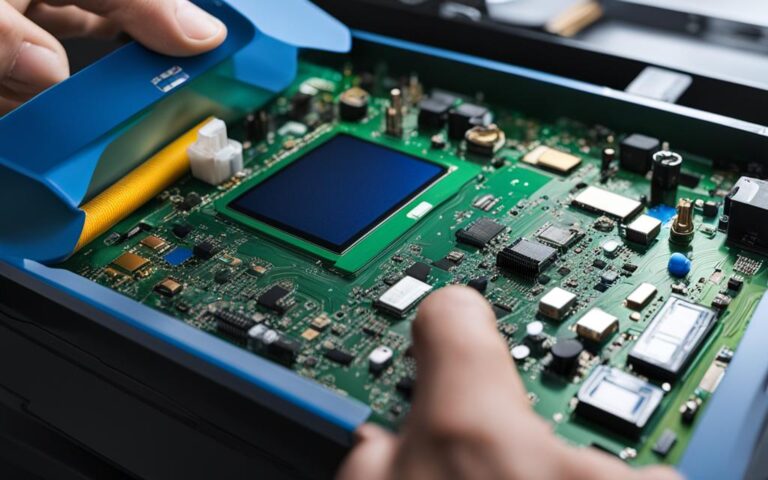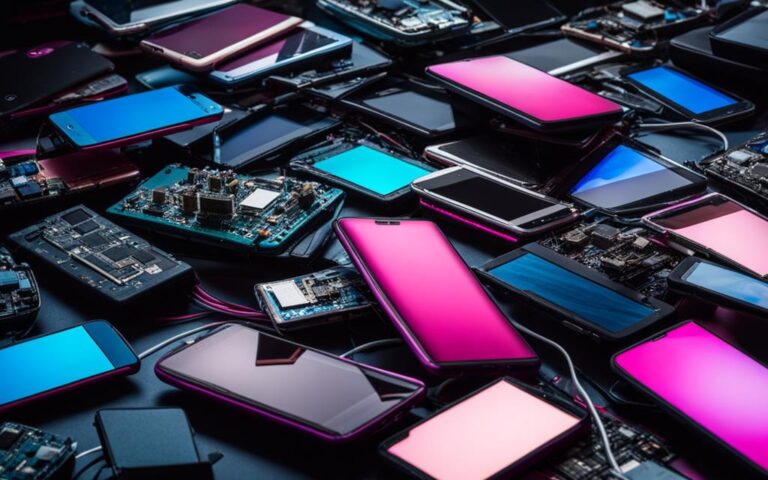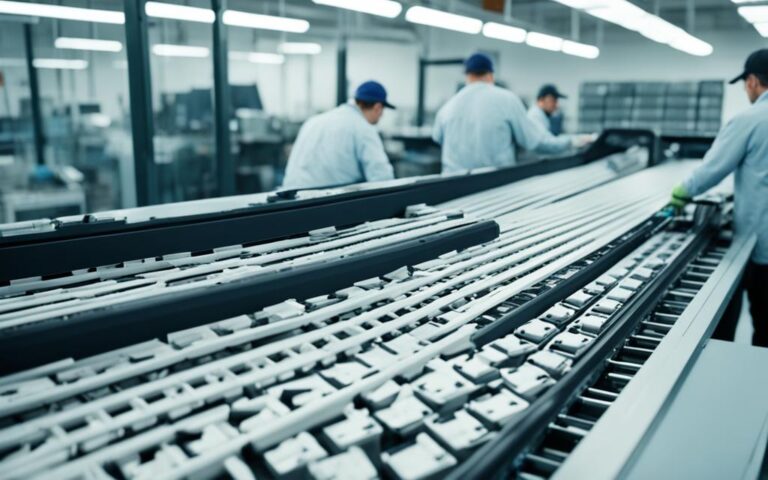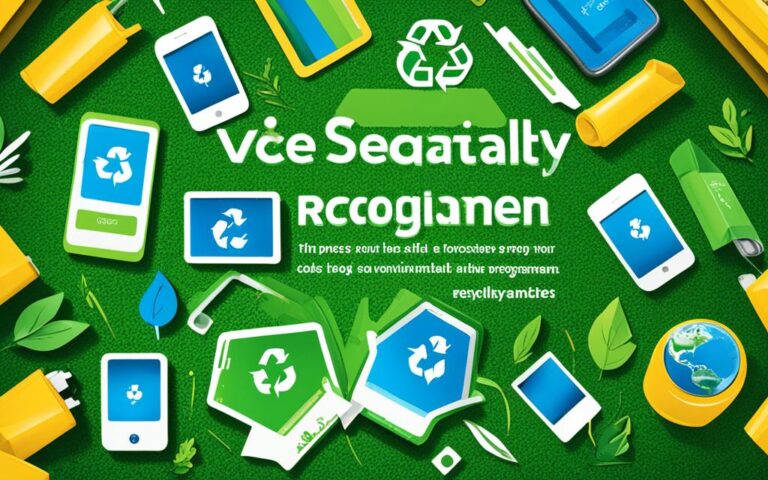The Tech Behind Recycling: How Phones and Tablets Are Processed
Did you know that your old phone or tablet could have a second life? Discover the fascinating world of phone and tablet recycling technology and unlock the secrets behind e-waste management.
Electronic waste, or e-waste, is a growing concern worldwide. With the rapid advancement in technology and the low initial cost of these devices, more and more phones and tablets are being discarded, contributing to the mounting piles of electronic waste. But what if we told you that these outdated devices hold valuable resources that can be recycled and reused?
Phone tablet recycling technology is the key to reducing the impact of electronic waste on our environment. These devices contain precious metals and plastics that can be recovered and repurposed, saving energy and conserving valuable resources.
Through innovative recycling processes, outdated phones and tablets are dismantled, and their components are carefully separated. Hazardous elements like lead, arsenic, and gold are extracted, while the remaining materials are repurposed or recycled. This state-of-the-art technology ensures that no valuable resource goes to waste, making the process truly sustainable.
Join us as we delve into the details of the recycling process, explore the environmental impact of mobile phone waste, and learn about the global efforts and impact of phone and tablet recycling programs. Together, let’s embrace the responsibility of proper e-waste management and pave the way for a greener future.
The Environmental Impact of Mobile Phone Waste
Improper disposal of mobile phones contributes to electronic waste pollution. When these devices end up in landfills, they can release toxic materials into the air, soil, and drinking water. In the U.S., electronic scrap accounts for 70% of overall toxic waste in landfills. The U.S. Environmental Protection Agency (EPA) reported that in 2009, 420 million mobile phones were discarded, but only 12 million were collected for recycling.
| Statistics on Mobile Phone Waste | |
|---|---|
| Percentage of electronic scrap in landfills | 70% |
| Number of mobile phones discarded in 2009 | 420 million |
| Number of mobile phones collected for recycling in 2009 | 12 million |
In an era of constant technological advancement, the disposal of mobile phones has become a pressing concern. These small devices, often taken for granted, pose a significant threat to the environment when not responsibly managed. As consumers embrace the latest models and upgrades, the accumulation of electronic waste continues to grow.
Mobile phones contain various components, including hazardous materials such as lead and arsenic, as well as valuable resources like gold and silver. When left to decay in landfills, these devices release toxic substances that can contaminate the surrounding ecosystem, polluting the air, soil, and water sources. This not only endangers human health but also disrupts the delicate balance of our planet.
The staggering statistics from the EPA illustrate the magnitude of the problem. Despite the high number of mobile phones discarded in 2009 alone, only a fraction were collected for recycling. Without proper disposal methods in place, electronic waste continues to accumulate, exacerbating landfill pollution and endangering our environment.
To address this issue, it is essential for individuals and organizations alike to prioritize responsible mobile phone disposal. By recycling these devices instead of discarding them in landfills, we can help reduce electronic waste and mitigate its detrimental impact on the environment. Through education, awareness campaigns, and the establishment of convenient recycling programs, we can all contribute to a cleaner, greener future.
“The improper disposal of mobile phones not only leads to the accumulation of electronic waste but also jeopardizes our planet’s delicate ecosystem.” – Environmental Protection Agency
The Process of Mobile Phone Recycling
Mobile phones have a complex composition for recycling, with various components that contribute to their functionality. These components include the printed circuit board (PCB), liquid crystal display (LCD), camera, flexible substrate and motor, and speaker and microphone.
When it comes to recycling mobile phones, it is important to note that these components are not only made of precious materials but also hazardous elements. Elements such as lead, arsenic, gold, silver, and copper are commonly found in mobile phone components, posing potential risks to both human health and the environment if not properly managed.
The recycling process of mobile phones involves multiple stages, each geared towards maximizing resource recovery and minimizing the environmental impact. One of the key steps in the process is the collection of used mobile phones, which can be done through various channels such as prepaid shipping labels, take-back programs, and drop-off points.
Once collected, the mobile phones are carefully disassembled, separating the different components for further processing. The hazardous elements, such as lead and arsenic, are treated and disposed of in an environmentally responsible manner to prevent their release into the ecosystem.
The precious materials, on the other hand, are extracted and recycled to be used in the manufacturing of new products. These materials, including gold, silver, and copper, can be recovered through specialized techniques like smelting and hydrometallurgical processes.
Overall, the recycling process of mobile phones plays a vital role in mitigating the environmental impact of these devices and promoting the circular economy. By recovering valuable resources and properly managing hazardous elements, mobile phone recycling contributes to a more sustainable and responsible approach to electronic waste management.
Below is a table summarizing the hazardous elements and valuable materials found in different mobile phone components:
| Mobile Phone Component | Hazardous Elements | Valuable Materials |
|---|---|---|
| Printed Circuit Board (PCB) | Lead, arsenic | Gold, silver, copper |
| Liquid Crystal Display (LCD) | Arsenic | Indium, tin |
| Camera | Arsenic | Gold, silver |
| Flexible Substrate and Motor | Arsenic, lead | Gold, copper |
| Speaker and Microphone | Arsenic, lead | Gold, silver, copper |
By understanding the composition of mobile phone components and the recycling process, we can effectively contribute to the sustainable management of electronic waste and the preservation of our environment.
Global Efforts and Impact of Phone and Tablet Recycling
Electronic waste is a global problem, with e-waste accumulating at an alarming rate. To address this issue, responsible disposal and recycling of mobile phones and tablets are crucial. Many developed countries, including Australia, the United Kingdom, and the United States, have recognized the importance of mitigating e-waste and have implemented mobile recycling programs to reduce waste and promote responsible recycling.
However, the improper dismantling and burning of e-waste still pose significant challenges. Developed countries often ship their electronic waste to less developed parts of the world, where informal recycling methods are prevalent. These practices can release toxic emissions into the environment, harming waste site workers and surrounding communities.
By embracing responsible disposal and recycling practices, we can minimize the harmful effects of e-waste. Mobile recycling programs play a vital role in raising awareness and providing accessible avenues for individuals and businesses to recycle their unwanted devices. These programs ensure that mobile phones and tablets are processed in an environmentally friendly manner, reducing the negative impact of electronic waste on our planet.
The Global Impact of Mobile Recycling Programs
Mobile recycling programs have made a significant impact on reducing e-waste and promoting responsible disposal. Let’s take a closer look at the efforts made by Australia, the United Kingdom, and the United States in tackling the global e-waste problem:
| Country | Mobile Recycling Program | Key Features |
|---|---|---|
| Australia | MobileMuster | Collaboration with retailers, local councils, government agencies, and businesses to raise awareness and collect devices for recycling. |
| United Kingdom | N/A | Significant e-waste problem; only around 12% of all sold mobile phones are recycled. |
| United States | Various programs | Increased focus on mobile phone recycling due to higher ownership rates; challenges in managing e-waste effectively. |
These mobile recycling programs highlight the growing global awareness of e-waste and the need for responsible recycling. However, it is crucial for more countries to implement similar initiatives to address the pressing issue of electronic waste effectively.
Mobile Phone Recycling Programs Around the World
As electronic waste continues to pose a significant environmental challenge globally, mobile phone recycling programs play a crucial role in mitigating the impact. Through collaboration with various stakeholders, these programs raise awareness about responsible mobile phone recycling and provide accessible collection points for recycling. Let’s take a closer look at some of the notable programs in Australia, the United States, and the United Kingdom.
Australia: MobileMuster
Australia has successfully implemented the MobileMuster program, which focuses on recycling not only mobile phones but also batteries and accessories. MobileMuster collaborates with retailers, local councils, government agencies, and businesses to collect and recycle devices, ensuring that valuable resources are recovered and hazardous materials are disposed of safely. The program has made significant strides in raising awareness and improving recycling rates in the country.
United States: Addressing the E-waste Challenge
With the rise in mobile phone ownership, the United States has witnessed significant growth in the recycling industry. However, managing e-waste still poses challenges due to the sheer volume of electronic devices being discarded. Efforts are being made at both individual and institutional levels to promote responsible recycling practices. Community collection events, drop-off centers, and partnerships with electronic retailers have helped increase the accessibility of recycling options throughout the country.
United Kingdom: Tackling the E-Waste Problem
The United Kingdom faces a significant e-waste problem, with only a meagre 12% of all sold mobile phones being recycled. To address this issue, various initiatives and regulations have been introduced to encourage responsible disposal and recycling practices. Mobile phone operators often provide collection and recycling services to their customers, allowing them to return their old devices and accessories for safe recycling.
| Country | Mobile Phone Recycling Program | Key Features |
|---|---|---|
| Australia | MobileMuster | Collaboration with retailers, local councils, and government agencies. Recycling of mobile phones, batteries, and accessories. |
| United States | Various programs | Community collection events, drop-off centers, and partnerships with electronic retailers. |
| United Kingdom | Operator-led initiatives | Collection and recycling services provided by mobile phone operators. |
“Mobile phone recycling programs are essential in addressing the growing e-waste problem and preserving valuable resources. These initiatives not only aim to reduce electronic waste but also contribute to a more sustainable and environmentally responsible future.” – Environmental Expert
By implementing effective mobile phone recycling programs on a global scale, we can ensure the responsible disposal of electronic devices and the maximization of resource recovery. Together, we can make a positive impact on the environment and move towards a more sustainable future.
The Value of Mobile Phone Recycling
Mobile phones have value even after their intended use. The economic value of recycled cell phones comes from refurbished units that are resold to end-users and from recycling the precious metals present in the devices.
In one ton of cell phones, there are grams of silver, gold, and palladium. Refurbishment of cell phones is more profitable than recycling the internal parts. The value of precious metals, especially gold, has decreased over time in cell phones.
| Precious Metal | Grams per Ton of Cell Phones |
|---|---|
| Silver | 150-200 |
| Gold | 3-7 |
| Palladium | 0.4-0.8 |
By recycling these precious metals, we can reduce the need for mining and extraction, which has significant environmental impacts. In addition, the refurbishment of cell phones allows for the extension of their lifespan, reducing the demand for new devices and the associated environmental footprint.
However, it is important to note that the value of precious metals in cell phones fluctuates depending on market conditions and technological advancements. As new models are released and older ones become obsolete, the value of recycled cell phones may change.
The value of recycled cell phones extends beyond their economic worth. By recycling these devices, valuable resources are conserved, electronic waste is diverted from landfills, and the environmental impact of mining and extraction is reduced. It is a win-win situation for both the economy and the planet.
The Technology Behind Electronic Waste Recycling
Recycling consumer electronics, including smartphones, televisions, and computers, involves separating high-value metals from low-value materials. The economic driving force for consumer electronic recycling is the recovery of precious metals and rare earth metals present in these devices. Traditional methods like shredding and separation using strong acids have been used, but new technologies are emerging. These include robotic disassembly, ultrasound-assisted separation, and biometallurgy using microorganisms.
Robotic disassembly is a cutting-edge technology that utilizes advanced automation to dismantle electronic devices. Robots are programmed to identify and remove specific components, such as circuit boards, buttons, and connectors, for further processing.
Ultrasound-assisted separation is another innovative technique that employs high-frequency sound waves to extract valuable metals from electronic waste. The vibrations created by ultrasound waves cause the metals to separate from other materials, enabling efficient recovery.
Biometallurgy, a fascinating field of study, explores the use of microorganisms to extract precious metals from electronic waste. Certain bacteria and fungi have the natural ability to dissolve metals, allowing them to be easily separated and recovered.
“The advancements in separation technologies are revolutionizing the way we recycle consumer electronics. These cutting-edge methods not only maximize the recovery of valuable metals but also minimize the environmental impact of the recycling process.”
With the help of these innovative technologies, recycling facilities can optimize the extraction of precious metals and rare earth metals present in consumer electronics. This not only reduces the need for mining new resources but also conserves energy and significantly lowers carbon emissions.
Moreover, the implementation of these advanced separation technologies ensures the safe and efficient handling of electronic waste. By streamlining the recycling process, organizations can improve their overall sustainability practices and contribute to a circular economy.
| Separation Technology | Description |
|---|---|
| Robotic Disassembly | Utilizes automated robots to dismantle electronic devices and recover specific components for further processing. |
| Ultrasound-Assisted Separation | Harnesses high-frequency sound waves to extract valuable metals from electronic waste by causing them to separate from other materials. |
| Biometallurgy Using Microorganisms | Explores the use of microorganisms, such as bacteria and fungi, to dissolve and extract precious metals from electronic waste. |
As the demand for consumer electronics continues to rise, it is crucial to invest in advanced separation technologies to ensure efficient and sustainable recycling practices. By leveraging these innovations, we can maximize the recovery of precious metals while minimizing environmental impact, paving the way for a greener future.
Conclusion
The proper disposal and recycling of mobile phones and tablets play a crucial role in managing electronic waste and reducing environmental pollution. It is essential for both companies and individuals to prioritize responsible device lifecycle management to contribute to a greener and more sustainable future.
This includes taking steps such as repairing or replacing devices when possible, ensuring proper data wiping to protect sensitive information, and considering options for reassignment or recycling. By implementing these practices, we can extend the lifespan of our devices and reduce the need for new production, ultimately reducing the strain on our planet’s resources.
Quality recycling programs are instrumental in ensuring the success of these efforts. These programs should prioritize accessibility, allowing individuals to easily access collection and recycling facilities. Additionally, they should have certified partners who adhere to responsible recycling practices and comply with regulations to ensure proper handling of hazardous materials.
Data security is also a paramount concern in device recycling. Quality recycling programs should provide secure data destruction services to ensure that personal information is thoroughly erased before devices are recycled. This protects individuals’ privacy and prevents potential data breaches.
By embracing device lifecycle management practices, acting with environmental responsibility, and supporting quality recycling programs, we can all make a positive impact on the environment and contribute to a more sustainable future.
FAQ
Why is recycling mobile phones and tablets important?
Recycling mobile phones and tablets is crucial for managing electronic waste and saving energy and resources. These devices contain precious metals and plastics that can be recycled.
What happens when mobile phones are improperly disposed of?
Improper disposal of mobile phones contributes to electronic waste pollution. When these devices end up in landfills, they can release toxic materials into the air, soil, and drinking water.
What components of mobile phones are recycled?
Mobile phones have a complex composition for recycling, including components such as the printed circuit board (PCB), liquid crystal display (LCD), camera, and more.
Why is responsible disposal and recycling of mobile phones and tablets important?
Improper dismantling and burning of electronic waste can release toxic emissions, harming waste site workers and surrounding communities. Responsible disposal and recycling are crucial to prevent this.
Are there any mobile recycling programs in place?
Yes, many countries have implemented mobile recycling programs to reduce waste and promote responsible recycling. Examples include the MobileMuster program in Australia and recycling efforts in the United States and the United Kingdom.
Is there value in recycling mobile phones?
Yes, mobile phones have value even after their intended use. The economic value comes from refurbished units that are resold and from recycling the precious metals present in the devices.
How are precious metals and rare earth metals recovered during electronic waste recycling?
The recovery of precious metals and rare earth metals from consumer electronics involves separating high-value metals from low-value materials. Traditional methods like shredding and acid separation are used, along with emerging technologies like robotic disassembly and ultrasound-assisted separation.
What should companies and individuals prioritize in device lifecycle management?
Companies and individuals should prioritize responsible device lifecycle management, including repair or replacement, data wiping, and reassignment or recycling. Quality recycling programs should have accessibility, certified partners, compliance with regulations, and secure data destruction.

